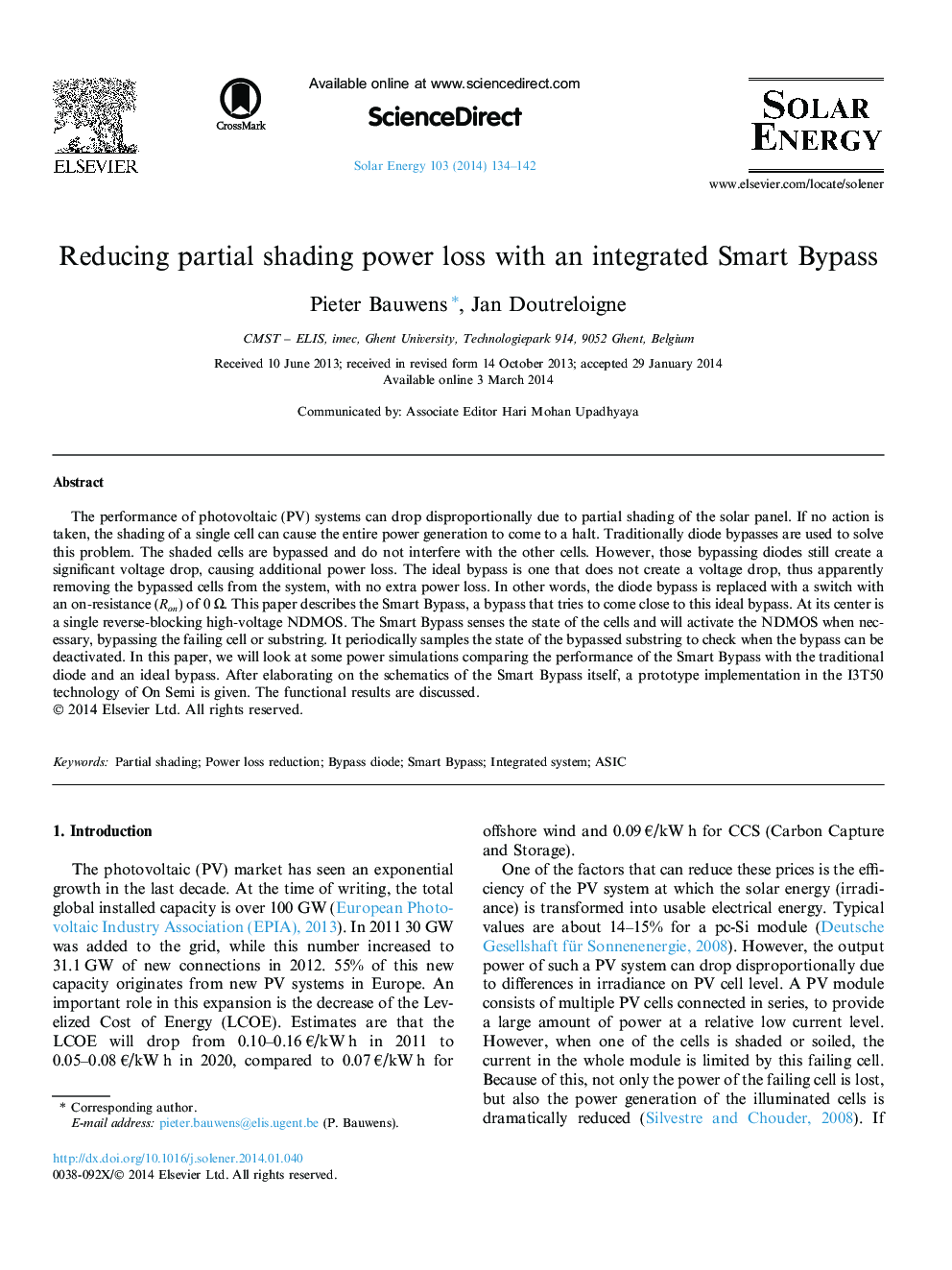| Article ID | Journal | Published Year | Pages | File Type |
|---|---|---|---|---|
| 7938298 | Solar Energy | 2014 | 9 Pages |
Abstract
The performance of photovoltaic (PV) systems can drop disproportionally due to partial shading of the solar panel. If no action is taken, the shading of a single cell can cause the entire power generation to come to a halt. Traditionally diode bypasses are used to solve this problem. The shaded cells are bypassed and do not interfere with the other cells. However, those bypassing diodes still create a significant voltage drop, causing additional power loss. The ideal bypass is one that does not create a voltage drop, thus apparently removing the bypassed cells from the system, with no extra power loss. In other words, the diode bypass is replaced with a switch with an on-resistance (Ron) of 0 Ω. This paper describes the Smart Bypass, a bypass that tries to come close to this ideal bypass. At its center is a single reverse-blocking high-voltage NDMOS. The Smart Bypass senses the state of the cells and will activate the NDMOS when necessary, bypassing the failing cell or substring. It periodically samples the state of the bypassed substring to check when the bypass can be deactivated. In this paper, we will look at some power simulations comparing the performance of the Smart Bypass with the traditional diode and an ideal bypass. After elaborating on the schematics of the Smart Bypass itself, a prototype implementation in the I3T50 technology of On Semi is given. The functional results are discussed.
Related Topics
Physical Sciences and Engineering
Energy
Renewable Energy, Sustainability and the Environment
Authors
Pieter Bauwens, Jan Doutreloigne,
